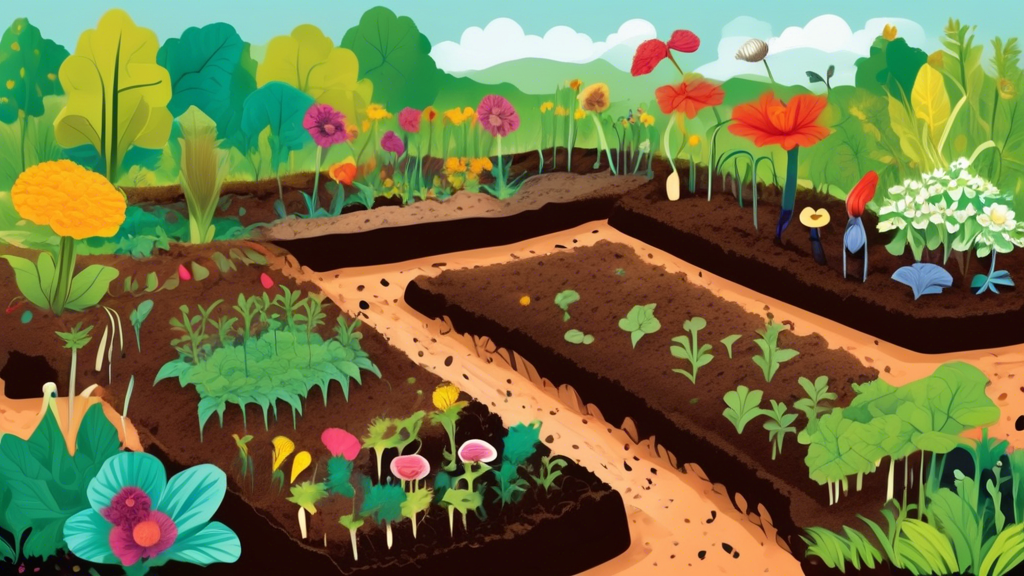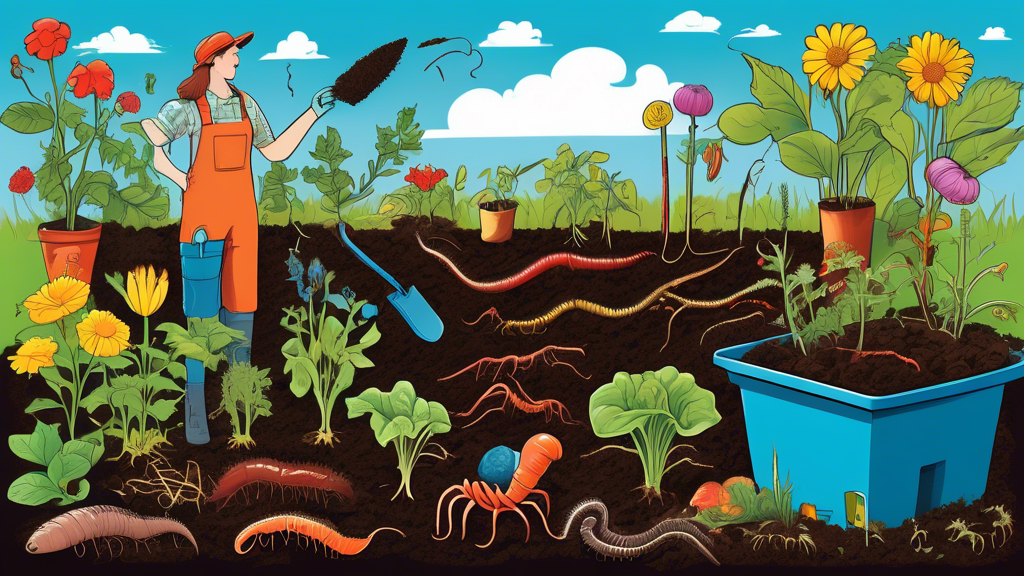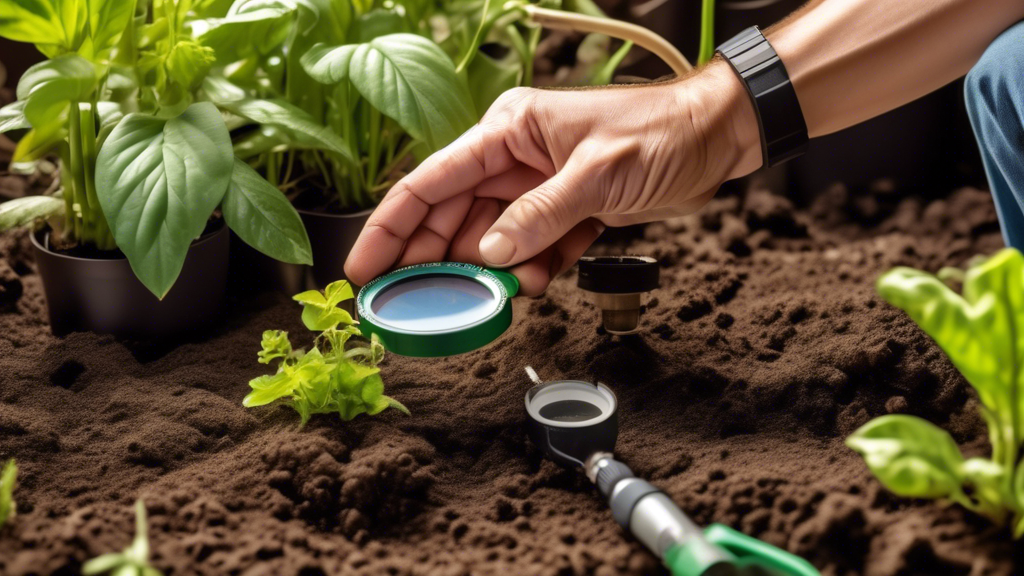
Why Bother with Companion Planting? The Core Benefits
Natural Pest Control Without Chemicals
Companion planting leverages the natural properties of plants to create an inhospitable environment for common pests. For instance, the strong scent of marigolds repels root-knot nematodes in the soil, while basil planted near tomatoes can deter hornworms and flies through its aromatic oils.
Enhanced Pollination and Fruit Set
By incorporating specific flowering plants, you attract a diverse population of pollinators like bees, butterflies, and hoverflies. This increased pollinator traffic directly improves the fruit set for crops like squash, cucumbers, and berries, leading to higher yields.
Improved Soil Health and Nutrient Uptake
Certain plant combinations work synergistically to enhance soil quality. Legumes such as beans and peas fix atmospheric nitrogen, making it available to neighboring heavy feeders like corn or leafy greens. Deep-rooted plants like comfrey or daikon radish can break up compacted soil and bring nutrients from deeper layers to the surface.
Efficient Use of Space and Maximized Yields
Companion planting allows you to utilize vertical and horizontal space more effectively. The classic “Three Sisters” method—combining tall corn, climbing beans, and sprawling squash—creates a layered, symbiotic system that maximizes yield in a small footprint.
Common Organic Gardening Challenges and Companion Planting Solutions
Challenge: Aphids and Other Sap-Suckers
Solution: Plant Nasturtiums as a “trap crop” to lure aphids away from your valuable vegetables. The aphids will preferentially attack the nasturtiums, keeping them off your brassicas and other susceptible plants.
Challenge: Poor Soil Nutrition
Solution: Interplant legumes like clover or beans with heavy feeders such as cabbage or corn. The legumes will naturally replenish soil nitrogen, reducing the need for external fertilizers.
Challenge: Squash Bugs and Cucumber Beetles
Solution: Implement the “Three Sisters” method where the spiny leaves of squash plants create a living mulch that deters pests. Additionally, interplanting radishes with cucumbers can help repel cucumber beetles.
Challenge: Needing More Pollinators
Solution: Intersperse flowering herbs like borage, dill, and cilantro throughout your vegetable beds. These plants not only attract pollinators but also provide nectar and habitat for beneficial insects that prey on common pests.
Essential Companion Planting Techniques to Master
Trap Cropping: The Art of Sacrifice
This technique involves planting a species that’s more attractive to pests than your main crop. The trap crop lures pests away, serving as a sacrificial plant that can be removed or treated without affecting your primary harvest.
Nurse Cropping: Using Plants as Living Supports
Tall, sturdy plants like sunflowers or corn can provide natural support for climbing vegetables such as pole beans and peas. This creates a symbiotic relationship where each plant benefits from the other’s structure and growing habits.
Interplanting for Pest Confusion
By mixing aromatic herbs, flowers, and vegetables throughout your garden, you create a complex scent profile that confuses pests and makes it harder for them to locate their preferred host plants.
Succession Planting with Companions
Plan your garden so that when one crop is harvested, a beneficial companion follows in its place. This maintains continuous soil coverage, prevents weed growth, and ensures year-round pest protection.
Companion Planting vs. Other Organic Methods: A Quick Comparison
Companion Planting vs. Crop Rotation
Comparison: Companion planting manages spatial relationships within a single growing season, while crop rotation manages temporal relationships across multiple seasons. These strategies work best when used together—companion planting for immediate benefits and crop rotation for long-term soil health and pest management.
Companion Planting vs. Using Organic Pesticides
Comparison: Companion planting is a proactive, preventative approach that creates a balanced ecosystem, while organic pesticides like neem oil are reactive solutions to existing problems. A well-designed companion planting system can significantly reduce or eliminate the need for any type of pesticide application.
Unique Insight: Beyond Pest Control – The Secret Language of Plants
Most gardeners understand companion planting for pest control, but few recognize the sophisticated chemical communication happening between plants. This phenomenon, known as Allelopathy, involves plants releasing biochemical compounds that influence the growth and health of neighboring plants.
Positive Example: Sunflowers release compounds that suppress weed growth around their base, creating a natural herbicide effect. This makes them excellent companions for many garden vegetables.
Critical Anti-Companion: The Black Walnut tree releases juglone, a compound toxic to tomatoes, peppers, and other solanaceous plants. Understanding these negative interactions is just as important as knowing beneficial pairings.
A Quick-Reference Guide: Popular Plant Pairings and Foes
The Best Friends of the Garden
| Primary Crop | Beneficial Companions | Benefits |
|---|---|---|
| Tomatoes | Basil, Marigolds, Carrots | Pest repellent, improved flavor |
| Carrots | Onions, Rosemary, Leeks | Carrot fly prevention |
| Cucumbers | Nasturtiums, Radishes, Dill | Pest control, enhanced growth |
| Corn | Beans, Squash, Cucumbers | Natural support, weed suppression |
Plant Combinations to Avoid
| Primary Crop | Incompatible Plants | Reason |
|---|---|---|
| Beans | Onions, Garlic, Chives | Stunted growth |
| Potatoes | Tomatoes, Squash, Sunflowers | Increased pest susceptibility |
| Cabbage | Strawberries, Tomatoes | Competition for nutrients |
| Asparagus | Onions, Garlic | Growth inhibition |
Frequently Asked Questions About Companion Planting Techniques for Organic Gardens
Does companion planting really work, or is it just gardening folklore?
While some traditional pairings lack extensive scientific validation, many companion planting relationships are supported by research into plant biochemistry and insect behavior. The method’s effectiveness lies in promoting biodiversity, which is fundamental to organic gardening success.
Can I practice companion planting in a small space or containers?
Absolutely! Container gardening is ideal for companion planting. Try pairing basil with patio tomatoes, or plant lettuce around the base of pepper plants. Even window boxes can host beneficial plant combinations that deter pests and improve growth.
What is the single most important companion planting technique for a beginner to try?
Start with marigolds. They’re easy to grow, repel a wide range of pests including nematodes and whiteflies, and provide colorful accents to your garden. Planting marigolds throughout your vegetable beds is an excellent introduction to companion planting principles.
Where can I find a reliable chart for plant companions?
Seek out companion planting guides from university extension services or established organic gardening organizations. These sources typically provide research-based information rather than perpetuating gardening myths. Always cross-reference multiple reputable sources for the most accurate guidance.
Final Thoughts: Mastering companion planting techniques for organic gardens is an ongoing process of observation and adaptation. Start with a few proven combinations, keep detailed notes about what works in your specific garden conditions, and gradually expand your companion planting repertoire. The result will be a more resilient, productive, and beautiful garden ecosystem that thrives with minimal intervention.






